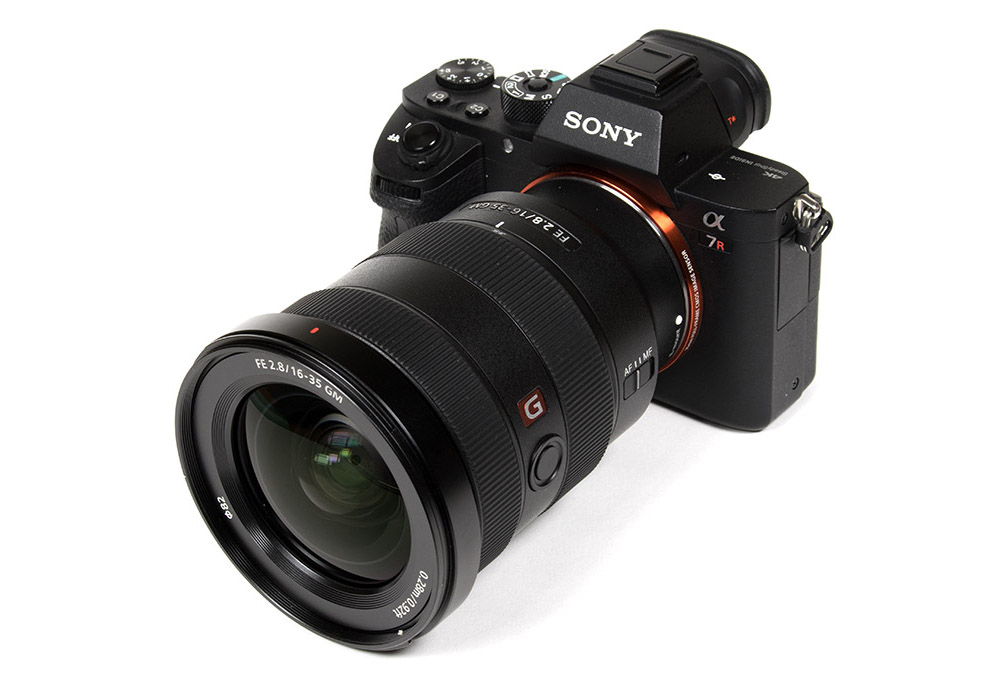by Klaus Schroiff, published April 2018
Introduction
If you want to play a role in the professional (full format) market you have to offer a variety of lenses and at the center of such a system, there’s the holy trinity of f/2.8 zoom lenses – a 16-35mm f/2.8, 24-70mm f/2.8 and 70-200mm f/2.8. That’s all old news in the DSLR league but as of the time of this review, Sony provides the only mirrorless system that fulfils this requirement. A while back we reviewed the Sony FE 24-70mm f/2.8 GM – a quite impressive lens even on a high-resolution camera. This time we’ll have a look at its wider cousin – the Sony FE 16-35mm f/2.8 GM. Beyond this f/2.8 option, the Sony FE system is certainly not shy of ultra-wide alternatives. There’s the Zeiss FE 16-35mm f/4 OSS, the Sony FE 12-24mm f/4 G and, if primes are your things, the Zeiss Batis 18mm f/2.8. These are all good if not great lenses thus one interesting question will be whether the FE 16-35mm f/2.8 GM is really worth the extra money – and we are talking about a market price of around 2200USD or 2500EUR here.
As the name implies the lens is a member of the GM (G Master) class – thus Sony’s highest grade lenses. Besides other aspects that also translates to top build quality based on a tightly assembled metal body. The zoom and focus rings operate smoothly. On the downside, the FE 16-35mm f/2.8 GM does extend slightly during zooming – or to be precise it does retract. The lens has its longest extension at the 16mm setting. Sony is still calling it an IF (internal focus) system because the size doesn’t change during focusing – although that’s nothing special anymore these days. Given its professional scope, it is, of course, weather-sealed. A fluorine front-element coating on the front element is supposed to repel dust and fluids. A small petal-shaped lens hood is part of the package.

The AF system is based on Sony’s usual Direct Drive SSM. In fact, it doesn’t have one but two of those units – probably because of the heavy lens groups. The system is silent and provides good albeit not exceedingly fast speed. Manual focusing works, as usual, by wire thus you are driving the AF motor by turning the focus ring. That’s works nicely. Other than the usual AF/MF switch, you can also use a (reprogrammable) focus hold button for controlling the AF.
| Specifications | |
|---|---|
| Optical construction | 16 elements in 13 groups inc. 2xXA, 2x aspherical, 2xED elements |
| Number of aperture blades | 11 (circular) |
| min. focus distance | 0.28m (1:5.26) |
| Dimensions | 88.5×121.6mm |
| Weight | 680g |
| Filter size | 82mm |
| Hood | supplied, petal-shaped, bayonet mount |
| Other features | Nano AR Coating, Focus-hold button, weather sealing |
Distortion
If you rely on Sony’s image auto-correction algorithms, there’s little to worry about in terms of distortions. A maximum of 0.6% barrel distortion at 16mm may be just noticeable but it’s far from disturbing.
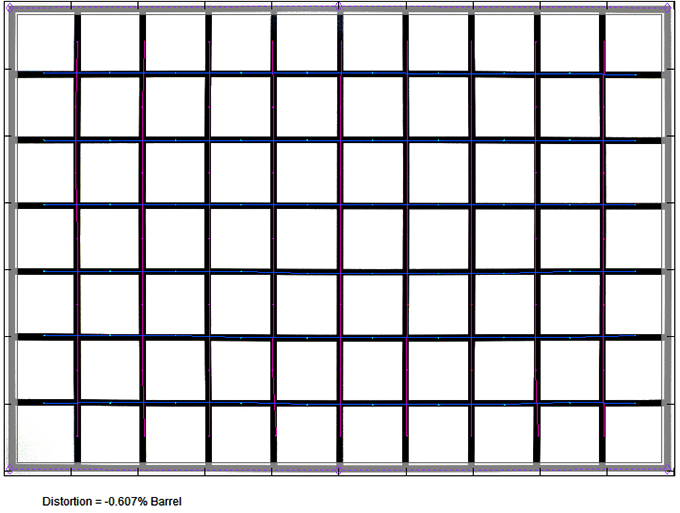
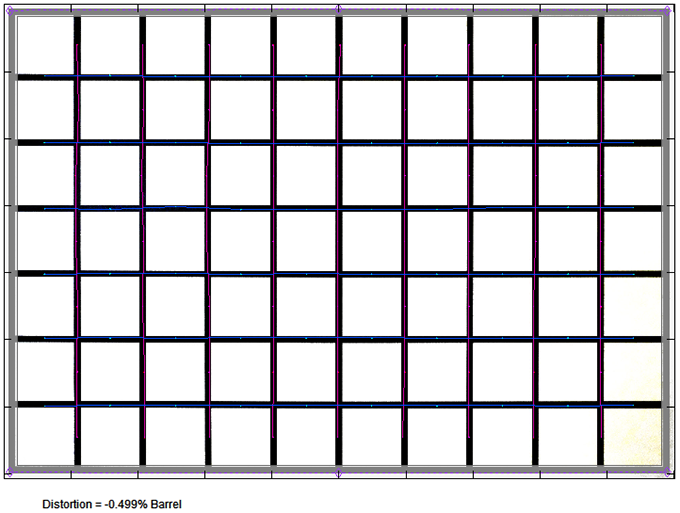
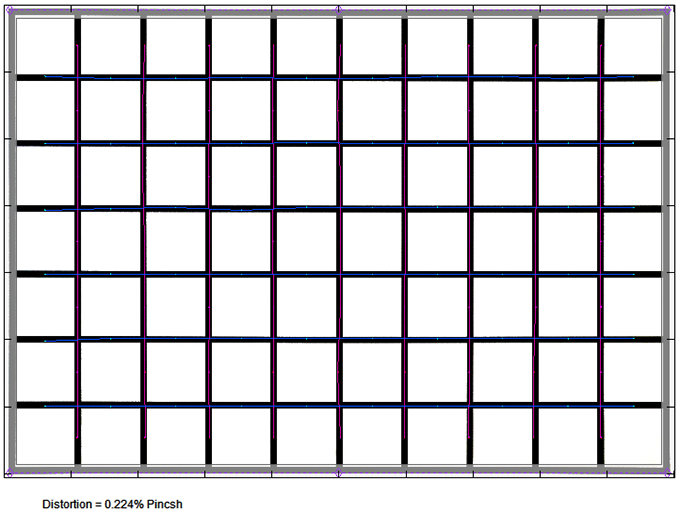
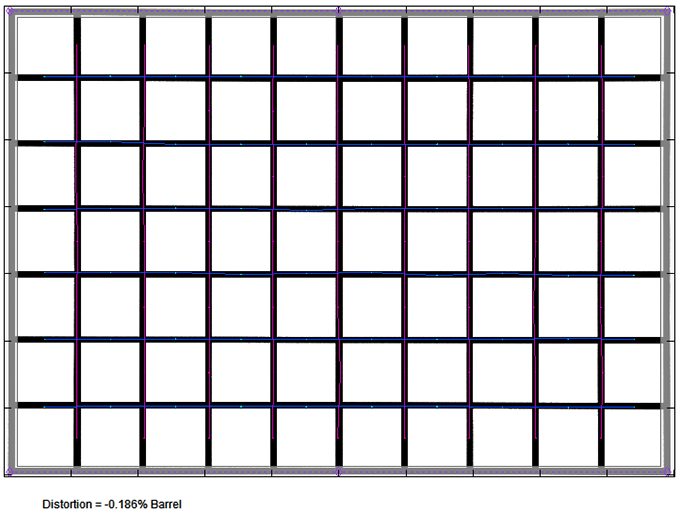
The native characteristic of the lens is, of course, worse albeit not excessive for a lens in this class. At 16mm there is a heavy barrel distortion of ~4.2%. This is reduced to a moderate degree at 20mm and the Sony lens is pretty much free of distortions at 24mm. From there, the distortion characteristic switches to pincushion type reaching a moderate 1.3% at 35mm.
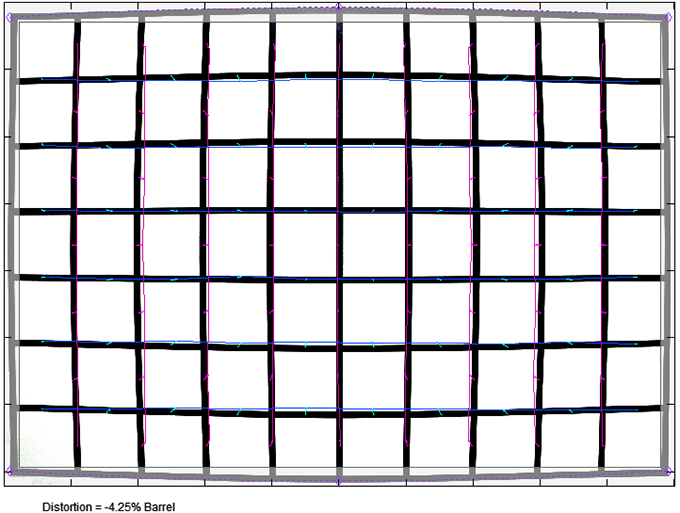
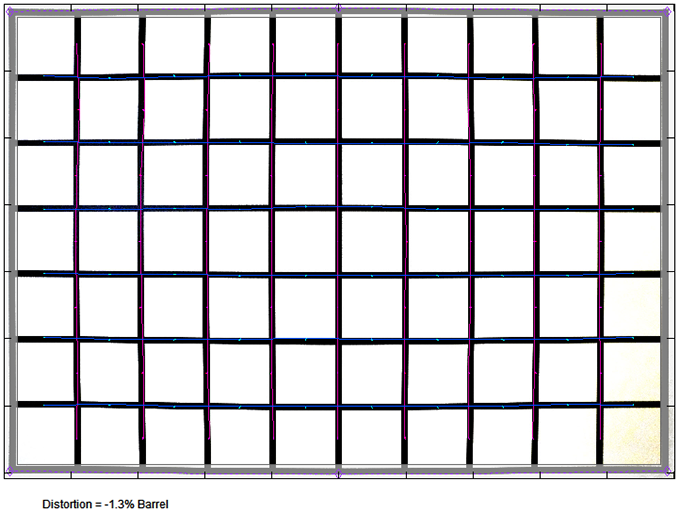
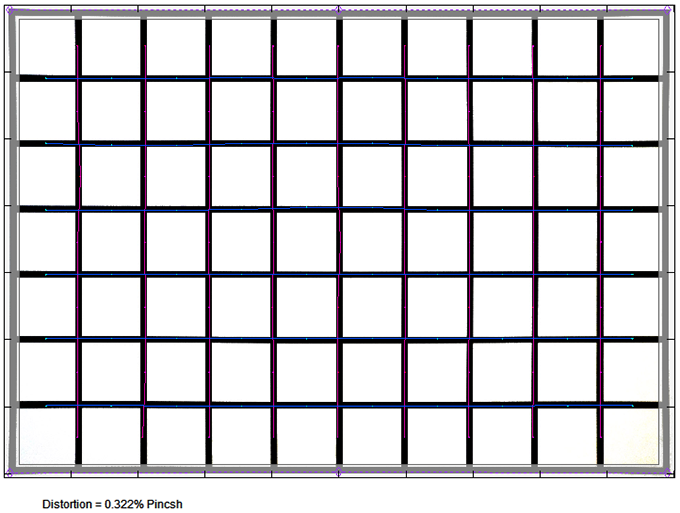

Vignetting
A similar story line applies to vignetting. With activated vignetting correction, there’s still a visible light falloff of 1-1.5EV (f-stops) at fully open aperture. Stopping down reduces the issue a bit but trace of vignetting remain albeit below disturbing levels.
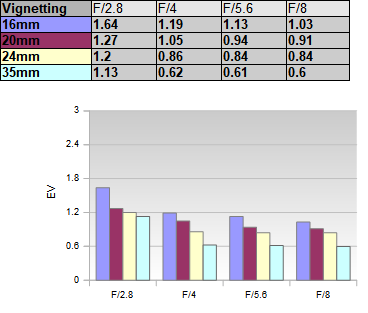
When looking at the native characteristic again, the vignetting is very pronounced with a peak of ~3.3EV (f-stops) at the wide-end at f/2.8. That being said the Sony FE 16-35mm f/2.8 GM remains in line with DSLR lenses in this class here. You can still spot a substantial light falloff at 16mm f/4 and 20mm f/2.8. As you might expect, it’s a lesser issue at longer focal lengths. The vignetting doesn’t disappear at 16mm even at f/8 but it’s not all that obvious anymore.
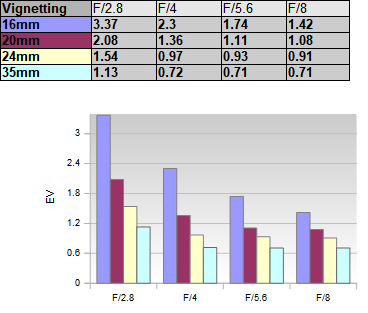
MTF (resolution)
The Sony FE 16-35mm f/2.8 GM does a good job here but it’s not without issues. The lens has been optimized towards the wide end of the range. The center quality is generally superb throughout the range – even with a high megapixel camera ( we are testing at 42mp ). At 16mm and 20mm the “near center zone” remains great. At 16mm f/2.8 the outer image field is fairly soft but improves when stopping down. The peak quality is reached around f/5.6 with good to very good borders/corners at 16/20mm. There’s a drop in quality from 24mm onwards. The borders/corners are soft again at f/2.8 but recover to good levels from f/4. For the best quality stick to f/5.6 or f/8 here. Diffraction is limiting the quality at f/11.
The amount of field curvature is surprisingly low. The centering quality of the tested sample was good.
Please note that the MTF results are not directly comparable across the different systems!
Below is a simplified summary of the formal findings. The chart shows line widths per picture height (LW/PH) which can be taken as a measure of sharpness. If you want to know more about the MTF50 figures you may check out the corresponding Imatest Explanations.

Chromatic Aberrations (CAs)
The amount of lateral chromatic aberrations (color shadows at the image borders) is very low considering the high megapixel sensor. The CAs peak at 16mm with an average pixel width around 1.2px at the image borders (somewhat more in the corners). However, that’s more than acceptable already and it’s even less at longer focal lengths.

Sample Images
Competition
As already hinted in the introduction, the Sony FE 16-35mm f/2.8 GM (to the left below) is competing against the Zeiss FE 16-35mm f/4 OSS (center below) and Zeiss Batis 18mm f/2.8 (to the right with attached hood here). You can also include the impressive Sony FE 12-24mm f/4 G to the list (not shown). The Zeiss FE 16-35mm f/4 OSS is a stop slower but thanks to its image stabilizer it has actually more low-light potential at least. Quality-wise it’s also comparable in the lower range at least. As good as the Sony lens may be, the Batis 18mm f/2.8 is better still but then the Batis is less flexible.

Visual comparison courtesy of camerasize.com.
The Sony FE 16-35mm f/2.8 GM is certainly a good lens but it has a couple of flaws as well. The lens has been optimized for the lower part of the focal length range - which is certainly most important for most buyers anyway. The corner performance isn't great at fully open aperture except at the sweet spot around 20mm. The performance is decent at longer focal lengths but it stays a little short of the very high exceptations at least. That being said - keep in mind that today's high resolution sensors are killers. Just have a look what the Canon EOS 5Ds R (50 megapixels) did to the comparable Canon EF 16-35mm f/2.8 USM L III.
Most will certainly take advantage of image auto-correction either directly in the camera or via a RAW converter thus neither distortions, CAs nor vignetting are real issues. However, the Sony lens has a decent native correction at least when compared to similar DSLR lenses. In the scope of its class, it also has a surprisingly good bokeh.
In terms of build quality, the Sony lens has everything you expect from a professional grade lens. It feels tough and has weather-sealing, The quality of the AF is largely depending on the base camera. On our test camera (A7R II), the speed is adequate for a lens in this class. Keep in mind that the Sony FE 16-35mm f/2.8 GM is not a small lens. Considering the small camera size, the balance is a bit off in our book - adding a vertical grip to your camera may be worth a thought.
The question of the day is, of course, whether the lens is worth its hefty price tag. As always, it depends. There are cheaper alternatives that are really good thus you should consider whether you really need the speed and/or flexibility.
-
Optical Quality
-
Build Quality
-
Price / Performance


